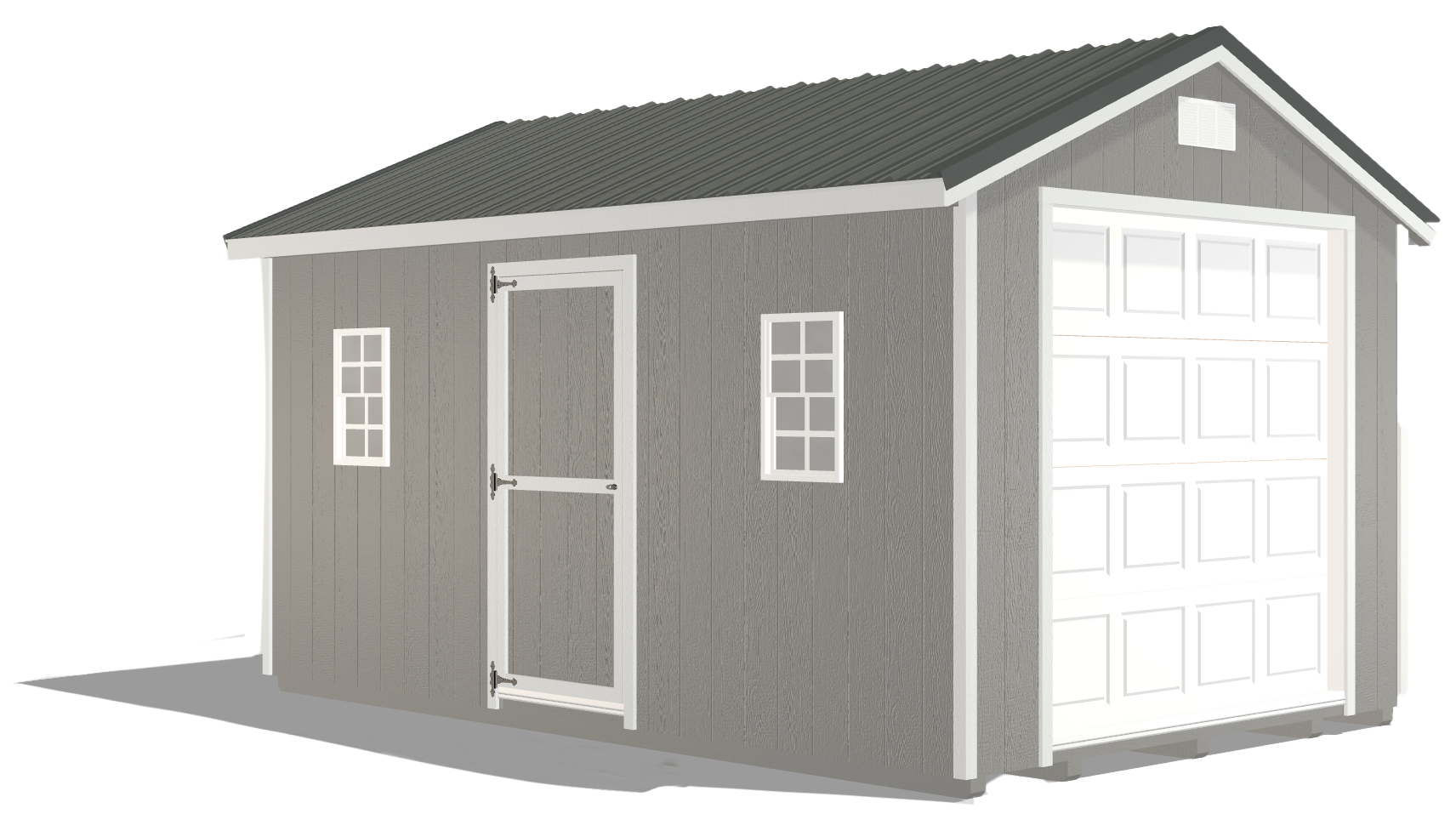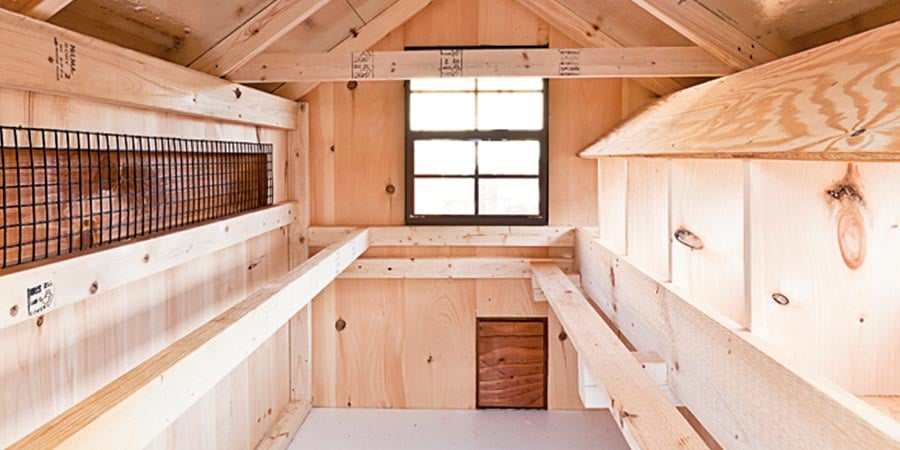Key Features of the Best Homestead Chicken Coops
by Dakota Storage Buildings, on April 05, 2022
You want the best breed for your needs, why not the best homestead chicken coop, too?
One of the primary purposes of modern-day homesteading is to have control over your resources and where they come from, including your food. When you can grow and raise your own food, you have peace of mind knowing exactly what went into it and what you can expect out of it. Nutritional content is higher, and ingredients are cleaner.
Whether a novice or soon-to-be homesteader, you're likely interested in raising homestead chickens for poultry, eggs, or both. You may have researched which chicken breed is best for your needs, settled on how many chickens you want, and decided whether or not a rooster is necessary. Now it's time for a chicken coop.
Before you look up DIY coop design plans or compare prefab coop options, be aware that the best homestead chicken coops have several key features in common. We'll talk about each in this post. As you narrow down your search to only those that include these features, you'll be one step closer to having healthy and safe chickens.
.webp?width=900&height=450&name=Header_FreeRangevsChickenRunWhichisBestforHomesteading%20(1).webp)
Secure Chicken Run for Outdoor Access
Even though coop windows allow sunlight in and vents encourage critical airflow, the best homestead chicken coops feature a securely enclosed run for chickens to access fresh air, grass, and dirt 24/7.
Runs are critical to hens because they need to stay busy, or else they'll get into chicken fights. They also need to take regular dirt baths to prevent harmful parasites. Chickens prefer to spend most of their time outdoors, so providing as much safe space as you can for the run is ideal. Enclosed runs allow your chickens to do what they need to do and access what they need while being protected from predators like foxes, raccoons, opossums, and hawks. Plus, an enclosed coop keeps your garden safe from your chickens.
Regarding size, the rule of thumb is to allow a minimum of ten square feet of outdoor run space per chicken. For example, if you have ten chickens, you should have a run that measures at least 10x10 or 100 square feet.
And what goes inside? To create a safe and healthy run, lay a base of sand or soil, add a sprinkle of regular-grade Diatomaceous Earth (DE) to prevent pests and moisture build-up, then add some absorbent organic bedding like hemp, hay, or wood chips to help soak up droppings.
Need to add some entertainment to your run? Remember, chickens like to stay active and entertained, or they'll end up hurting each other or getting into trouble. Check out these creative chicken run ideas.
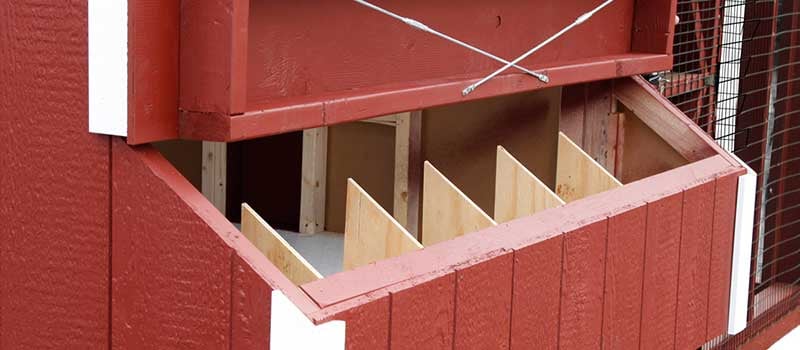
Nesting Boxes for Egg Collection
The best homestead chicken coops offer a clean, dedicated space for egg-laying, and you'll get high-quality eggs.
The rule of thumb is to provide one nesting box for every 3-4 hens, but it never hurts to have more. No matter how many you have, be aware that there's always a favorite box that the chickens will argue over.
If you're building a homestead chicken coop, you can use a wide range of items for nesting boxes: baskets, crates, 5-gallon buckets, plastic litter boxes — you name it. The most important thing is that the nesting boxes are in a quiet, clean, dark space, the keys to making chickens feel safe. Pre-built coops usually have sturdy, built-in nesting boxes made of wood. For a premium coop with a built-in run and durable nesting boxes, check out our Enclosed Chicken Coop.
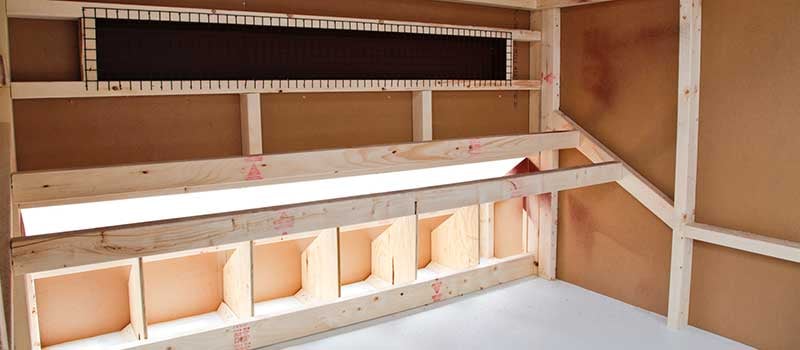
Dedicated Roosting Space
Chickens like to sleep up off the ground at night. Roosts provide the perching space they need for a good night's sleep. Although some chickens prefer to be by themselves, most sleep next to one another on the same roost for balance and warmth during cold weather.
Roosts should be 2-4" wide, positioned higher than the nesting boxes, and allow for at least 8 inches of roosting bar per hen. If you're going the DIY route, sturdy tree branches are functional and appealing to your homesteading chickens, but rubberized poles or lumber may also be used. Avoid using metals or plastics that can become slippery.
If you're looking for quality and value, the best homestead chicken coops have built-in roosts or add-on options that lock into place for safety.
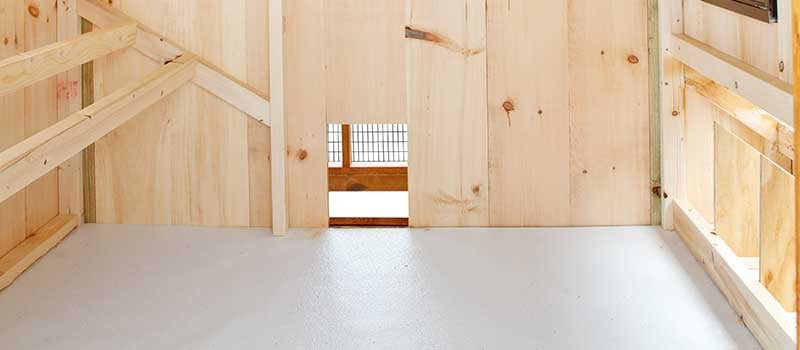
Durable & Easy-to-clean Flooring
The best homestead chicken coops have built-in scratch-resistant floors constructed of durable, easy-to-clean material that resists decay and warping. What you put on top of that quality flooring can also make a difference. For instance, depending on what you choose to use, you can help control moisture, provide insulation, and help keep chickens mite-free.
Sand is an excellent choice as it absorbs moisture and waste for easy cleanup. Straw, another option, isn't highly absorbable, which means it's slow to rot and decay. It is light, fluffy, and can provide a thick insulating layer against a cold floor.
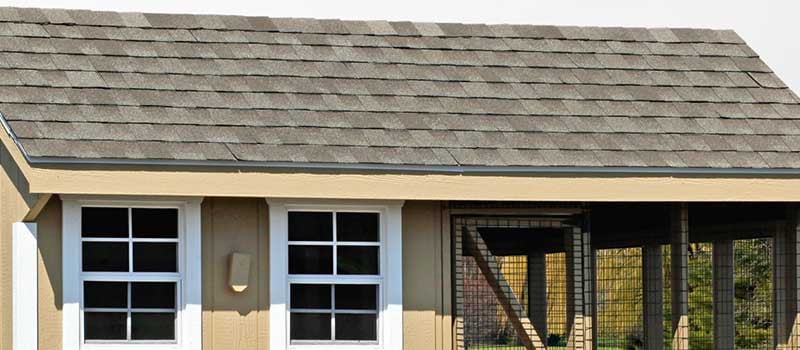
Leak-free Roofing
A good homesteading chicken coop roof is durable, weather-resistant, and sloped so that rain and snow slide off.
If you're building a coop, any roofing material that you'd use for a standard structure will work fine for a chicken coop: asphalt shingles, cedar shakes, roll roofing, built-up roofing, galvanized steel roofing, etc. Shingles are the most durable waterproof material but are more expensive than metal and plastic and harder to install. Some use temporary roofing such as tarps for their chicken runs, but more times than not, they develop holes quickly and are unreliable through bad weather.
The best homestead chicken coops that are high quality and ready to buy feature asphalt shingles or steel roofing that cover both the coop and the run. Some even have roof sheathing to help maintain the interior temperature.
Conclusion
There are many chicken coop options. With so many to choose from, including enclosed chicken coops, free-range chicken coops, traditional chicken houses, poultry sheds, portable coops, and more, how do you choose? It's easier than you think. The best homestead chicken coops have several key features in common that provide a safe place for happy and healthy chickens. Look for options in your budget that have those key features, and you'll be in good shape.
Want more coop insights? Before making a purchase, download our guide, How to Choose the Best Chicken Coop for Homesteading. While you want to protect your flock, you also want to make a long-lasting and valuable investment.


















